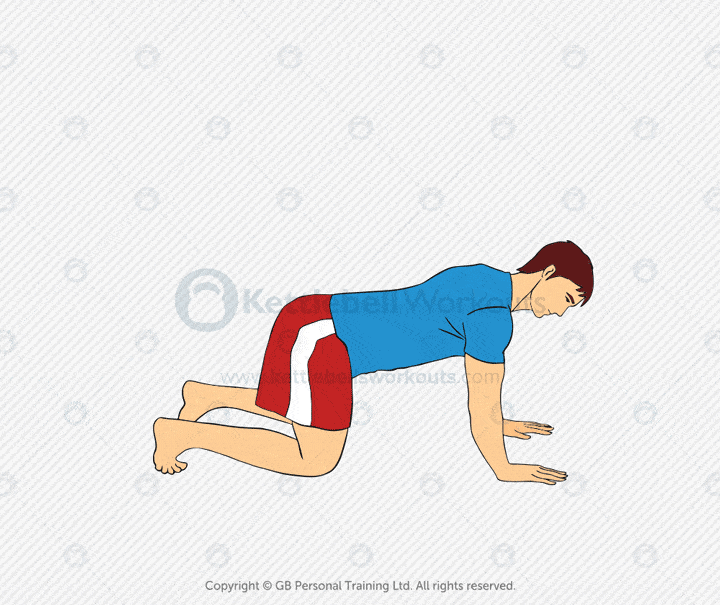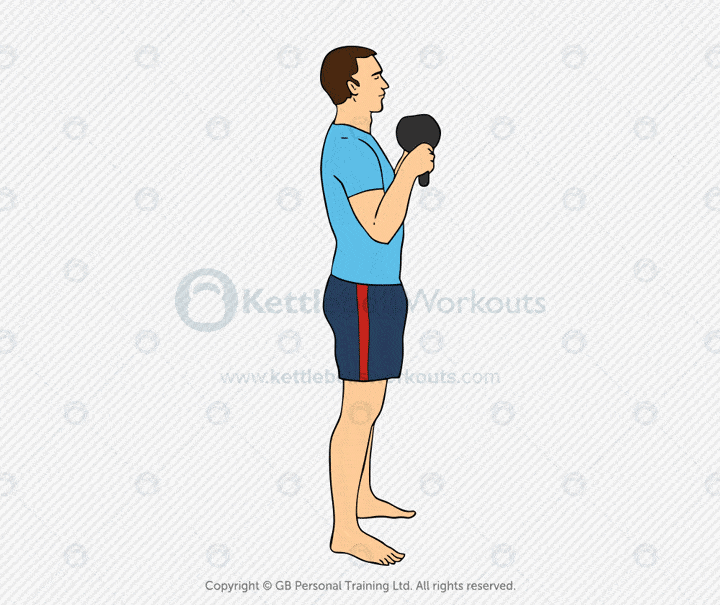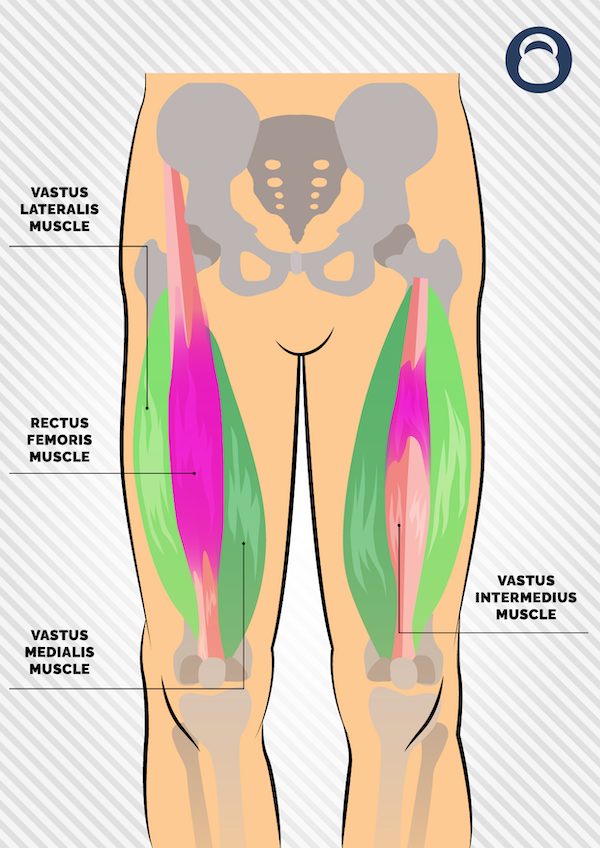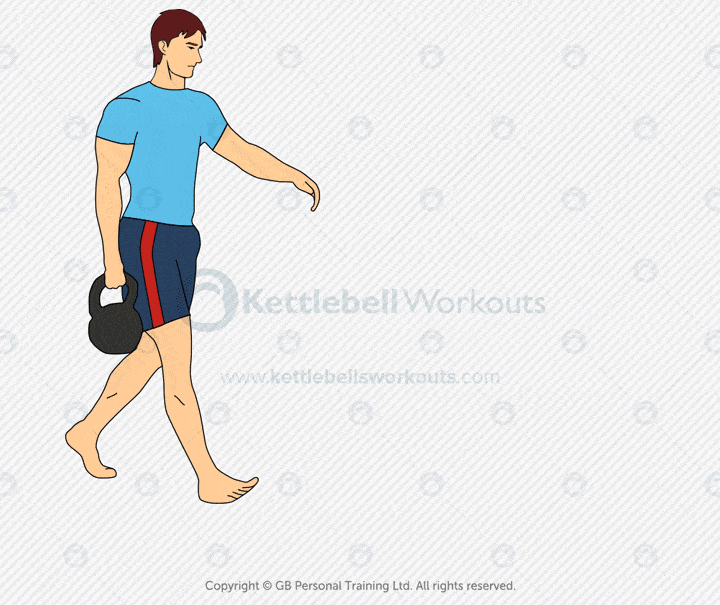Last Updated on 29 July 2025 by Greg Brookes

The kettlebell squat and press, sometimes referred to as the two-handed thruster, is a powerful full-body movement that combines lower-body strength with overhead pressing. Unlike its single-arm cousin, this version is ideal for beginners or those seeking a more stable variation to build strength and coordination.
It’s not just a compound exercise; it’s a seamless blend of mobility, core control, and functional strength. Perfect for metabolic training or as a transition to more advanced kettlebell movements.
What Is the Kettlebell Squat and Press?
This two-handed exercise begins with a deep kettlebell squat and finishes with a powerful push press overhead. The movement is fluid and rhythmic, using the momentum from the squat to drive the kettlebell upward.
You’ll typically hold the kettlebell by the horns in a goblet-style position. From there, you perform a controlled squat and immediately press the kettlebell overhead as you return to standing. One fluid movement, two major strength patterns.
Why It Matters
This isn’t just a time-saving combination exercise. The kettlebell squat and press trains your body to coordinate power from the legs to the upper body, improving kinetic chain efficiency.
- Improves total-body strength: Combines squat and overhead press into one efficient drill.
- Boosts cardiovascular fitness: More reps = more demand = improved work capacity.
- Enhances postural stability: Encourages tall posture through deep range and overhead lockout.
- Time-efficient: Trains multiple patterns at once, great for busy training sessions.
- Beginner-friendly: Easier to learn than single-arm or double-kettlebell versions.
This movement teaches proper bracing, tension, and breathing strategies under load, all while elevating your heart rate.
Muscles Worked
The kettlebell squat and press hits nearly every major muscle group in a single rep:
- Quads, Glutes, and Hamstrings: Drive the squat phase.
- Core and Spinal Erectors: Stabilise the torso throughout.
- Shoulders (Deltoids): Push the kettlebell overhead.
- Triceps and Upper Back: Lockout and stabilise the press.
- Forearms and Grip: Maintain control of the kettlebell at all stages.
This movement builds powerful legs and a strong press, while reinforcing posture and coordination.
Step-by-Step Instructions
Mastering the kettlebell squat and press starts with good foundational squat and press mechanics. Here’s how to do it:
- Hold the kettlebell at chest height with both hands (horns grip).
- Stand with feet just outside shoulder-width, toes slightly turned out.
- Lower into a deep squat; keep your chest up and knees tracking toes.
- As you return to standing, press the kettlebell overhead in one continuous motion.
- Lock out overhead with arms by your ears, then return to the goblet position.
- Repeat for desired reps with smooth, controlled tempo.
Tip: Focus on exhaling as you press and bracing your core throughout the movement.
Watch the Kettlebell Squat and Press in Action
Common Mistakes to Avoid
Small tweaks can make or break this lift. Here are common errors to watch for:
- Shallow squats: Incomplete depth limits glute and hamstring activation.
- Early press: Pressing too soon before you fully stand reduces efficiency.
- Lack of core tension: Can lead to lumbar extension or poor press mechanics.
- Kettlebell drift: The bell should stay centred and close, not away from the body.
Dial in your squat depth and sequencing first, then layer in the press.
Coach’s Insight: Greg’s Take
The kettlebell squat and press is often overlooked in favour of more advanced movements like the snatch or single-arm thruster. But don’t underestimate it.
This drill is brilliant for teaching total-body coordination and developing baseline power and endurance. It’s also a fantastic tool for de-loading after a phase of heavier double kettlebell work.
For my clients who are newer to kettlebells or coming back from injury, I’ll often program the two-handed version before moving on to more ballistic presses.
Warm-Up Drills
Before diving into squat and press reps, prep the hips, shoulders, and core:
- Bodyweight Squats: Groove depth and knee tracking.
- Wall Shoulder Slides: Activate upper-back and shoulder control.
- Bird Dogs or Dead Bugs: Fire up core bracing strategy.
- Goblet Squat Holds: Reinforce torso position and squat posture.
These drills ensure your joints and tissues are ready for controlled, full-range movement.

Progressions and Regressions
Wherever you are in your kettlebell journey, there’s a version of this movement for you.
1. Regression: Goblet Squat Only
Build strength and confidence in the squat pattern without adding the press. Focus on clean, deep reps and consistent breathing.

2. Baseline: Two-Handed Squat and Press
Use a light-to-moderate kettlebell and focus on fluid coordination. Master the timing before increasing load or reps.
3. Progression: Single-Arm Thruster
Add asymmetrical loading to challenge core stability and shoulder control. Great for those comfortable with rack position and single-leg balance.

4. Advanced: Double Kettlebell Thruster
Use two kettlebells in the racked position, excellent for advanced lifters seeking high intensity and muscular endurance.

Programming Tips and Reps
The kettlebell squat and press adapts to a range of goals:
- Strength–Power: 3–5 reps x 4 sets with moderate-to-heavy load.
- Endurance: 10–15 reps x 3 rounds with lighter load.
- Conditioning Circuit: Pair with swings or rows for time-based sets.
Rest 30–60 seconds depending on intensity and load.
Comparison to a Similar Movement
Compared to the single-arm kettlebell thruster, the two-handed squat and press:
- Is easier to learn and better for beginners.
- Encourages symmetry and postural control.
- Offers less core demand but more pressing volume.
Both are excellent, but the two-handed version is ideal for teaching fundamentals.
Related Exercises
If you enjoy this movement, also try:
Each complements the squat and press with a different emphasis.
Want More Smart Kettlebell Training?
Ready to upgrade your technique and programming? Dive deeper into my proven kettlebell strategies and become stronger, fitter, and more efficient.
Combine leg and shoulder strength with more complex lifts from the kettlebell exercises guide.
Frequently Asked Questions
Yes, because it uses so many muscles and raises the heart rate, it’s great for metabolic conditioning and fat burning.
Absolutely. The two-handed version is more stable and beginner-friendly than single-arm thrusters.
Start with 8–12kg for women, 12–16kg for men. Prioritise smooth form before increasing load.
The thruster typically refers to the single-arm version. This two-handed variation is a great stepping stone with less complexity.




Looking foreword to the challenge. Gotta drop 35lbs of FAT